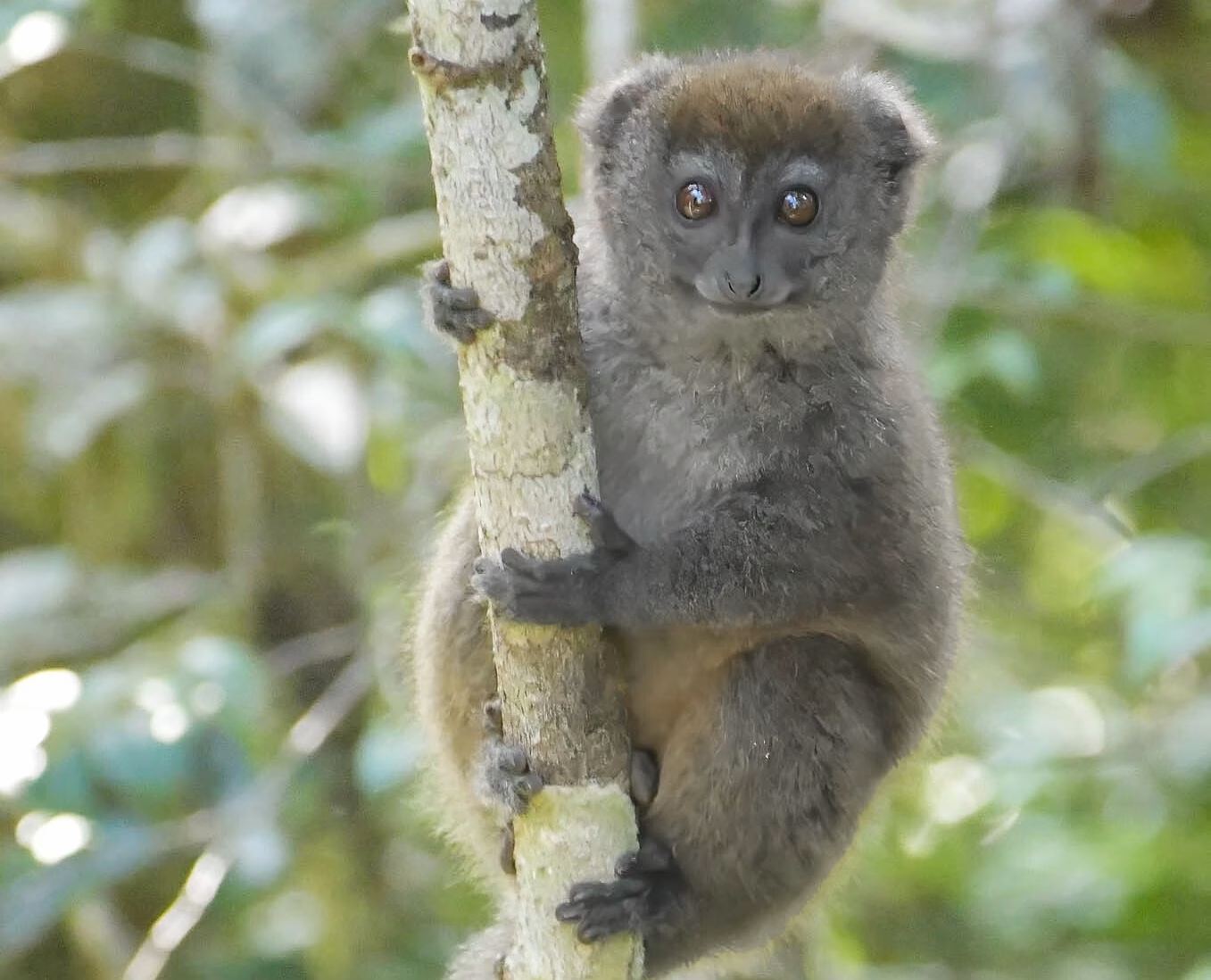eastern bamboo lemur
Hapalemur griseus
Vulnerable
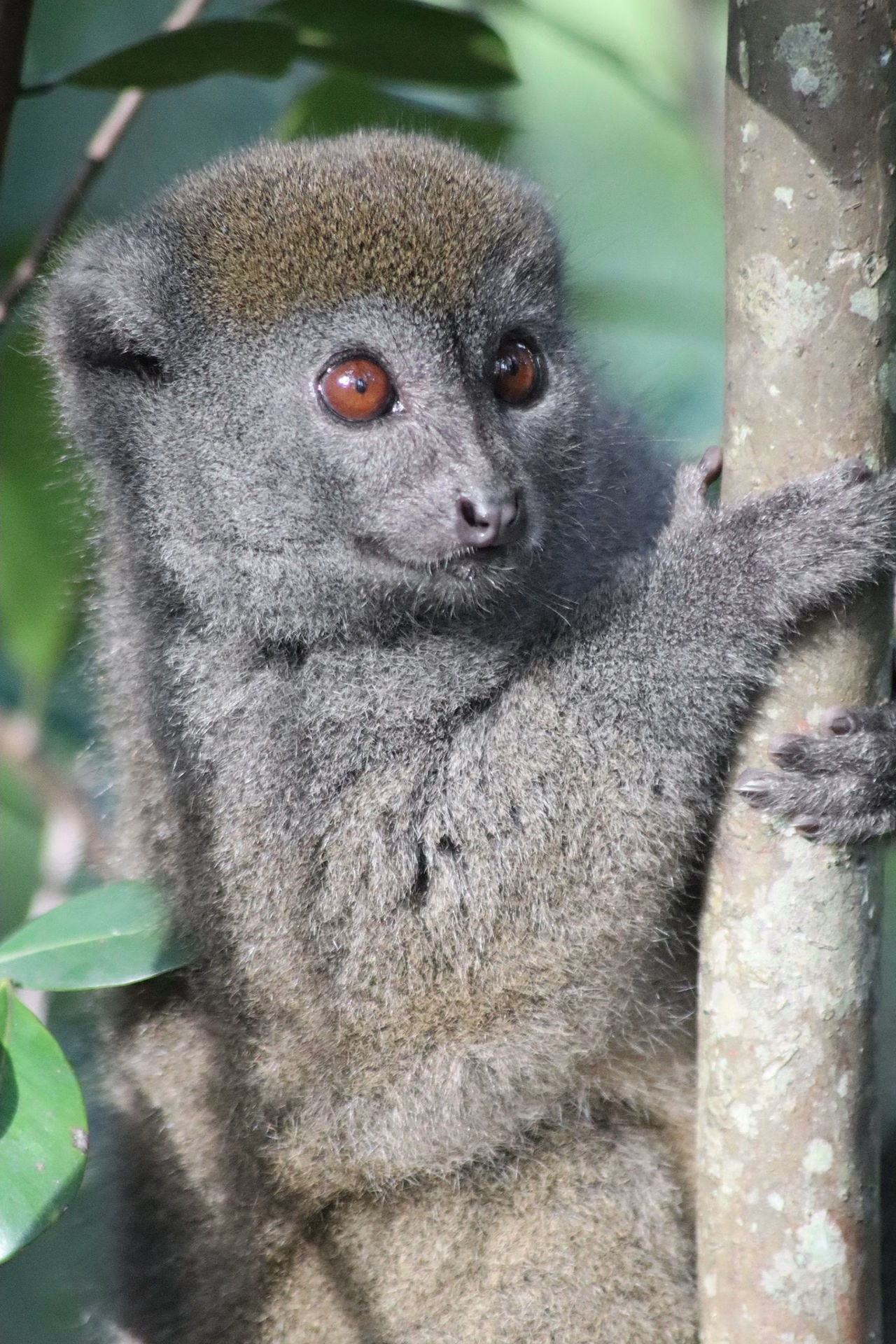
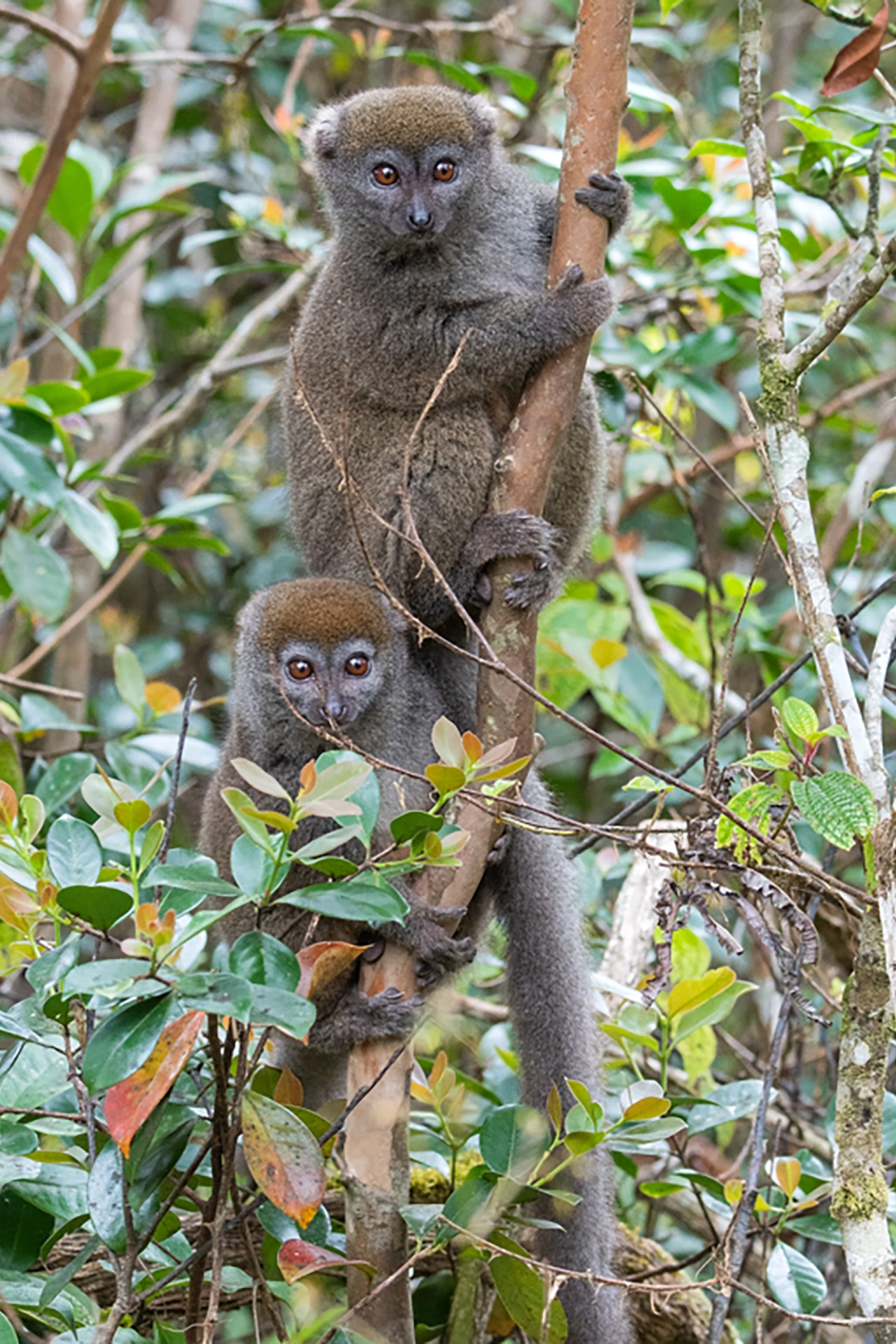


STATUS
Vulnerable
SIZE
Body length: 24 in (66 cm)
Weight: 2 lbs (0.93 kg)
LIFESPAN
About 15 years
HABITAT
Tropical lowland forest
Montane forest
Marshland
DIET
Bamboo, leaves, fruit
LIFESTYLE
Diurnal
Mostly arboreal
Social
REPRODUCTION
Gestation: about 140 days
Young: 1
THREATS
Habitat loss
Deforestation for agriculture and illegal logging
Being hunted as a food source
Illegal pet trade

INTERESTING FACTS
Bamboo lemurs are not affected by the cyanide levels found in the fresh bamboo they eat—how they process the toxin isn’t fully understood yet.
Unlike other lemurs, which have a “search and sniff” foraging strategy to find food, eastern bamboo lemurs tend to remain stationary and scan the nearby foliage for tender leaves and bamboo shoots.
Bathroom etiquette seems to be important to these lemurs! They descend to the ground, then line up and all defecate in one spot!
Characteristics
Eastern bamboo lemurs have small, compact bodies with shorter forearms than hind limbs. They are covered in a dense gray coat, tinted with cinnamon-colored fur on their back and the crown of their head. Scalloped ears, the outer sides of which are furry gray, sit close to either side of their head. Large red-brown eyes watch their environment. Their hands and feet are black and hairless, and their tail is even longer than their head and body length.
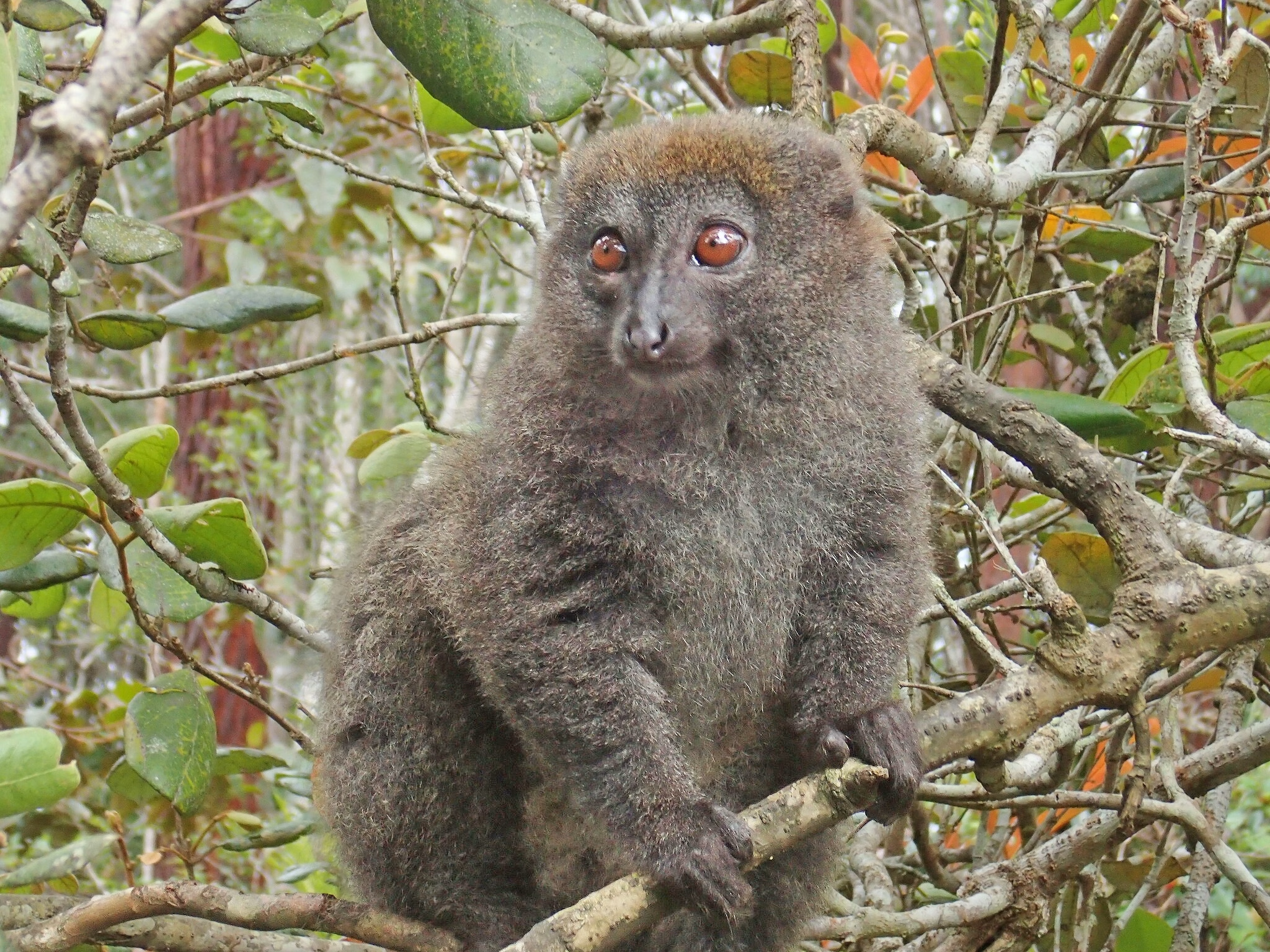
Foods and Feeding
As their name, eastern bamboo lemurs eat lots of bamboo. About 75% of their diet is comprised of this woody, flowering perennial. Of the more than 40 species of bamboo in their habitat, eastern bamboo lemurs favor the giant bamboo (Cathariostachys madagascariensis). The base and inner walls of young bamboo shoots are preferred. Only during winter months, when new shoots are scarce, will the lemurs eat the bamboo plant’s mature leaves and its hollow stem. These lemurs also eat grass stems, assorted berries, and young leaves of other plants, particularly liana vines.
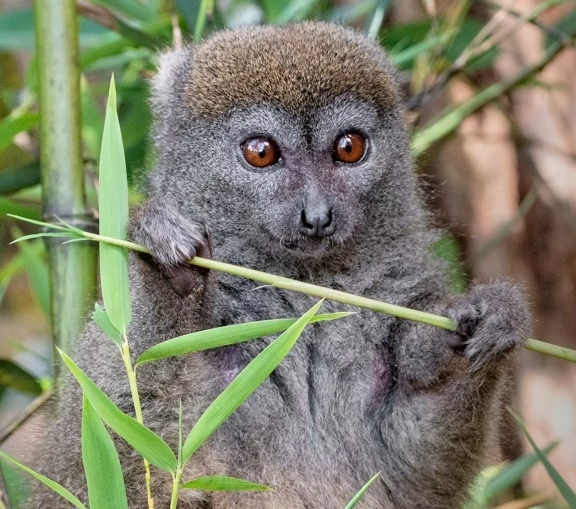
Behavior
Eastern bamboo lemurs live in social family groups ranging from three to six individuals and may include more than one breeding female. Unlike males, who leave their birth group upon reaching adulthood, females sometimes remain with their group. As with most lemur species, females are dominant over the males and are known to chase males away from a preferred feeding site. Males, however, are responsible for protecting their troop and defending their group’s territory from rival interlopers. Disputes with outside lemur groups typically occur when territories overlap. But these confrontations are rarely violent. Instead, a lot of posturing occurs, including scent marking, chasing, vocalizations, and “staring contests.”
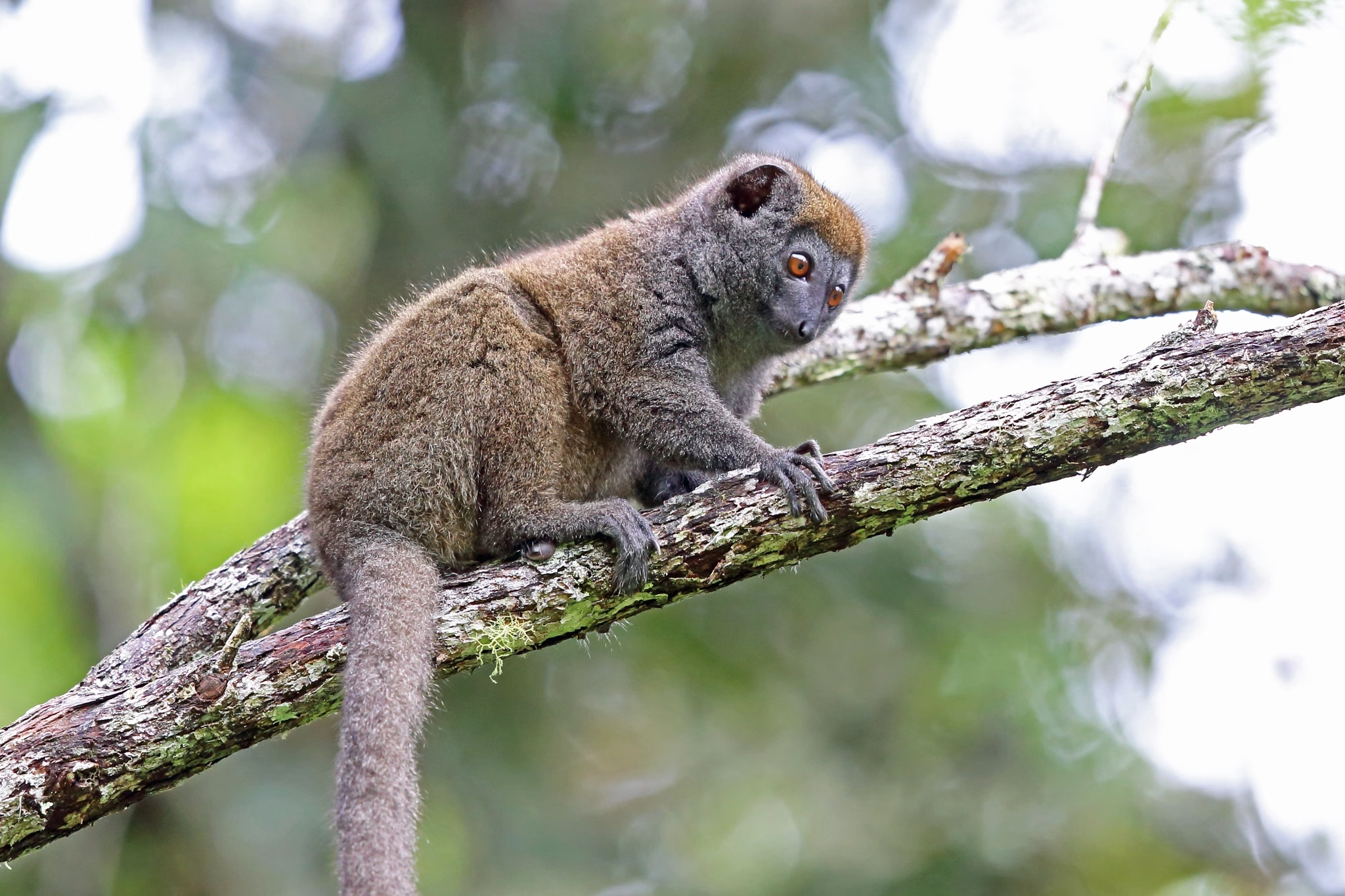
Home range size—from 19.8 to 37 acres (8 to 15 ha), depending on habitat quality—is relatively small when compared to home range size for other lemurs. They only tend to venture out of their home range when food sources are scarce.
Vocalizations are a key part of communication in the daily lives of eastern bamboo lemurs. Their rich vocal repertoire includes grunts, clicks, low growls, high-pitched screams, screeches, howls, and purrs. Each vocalization conveys a specific message.
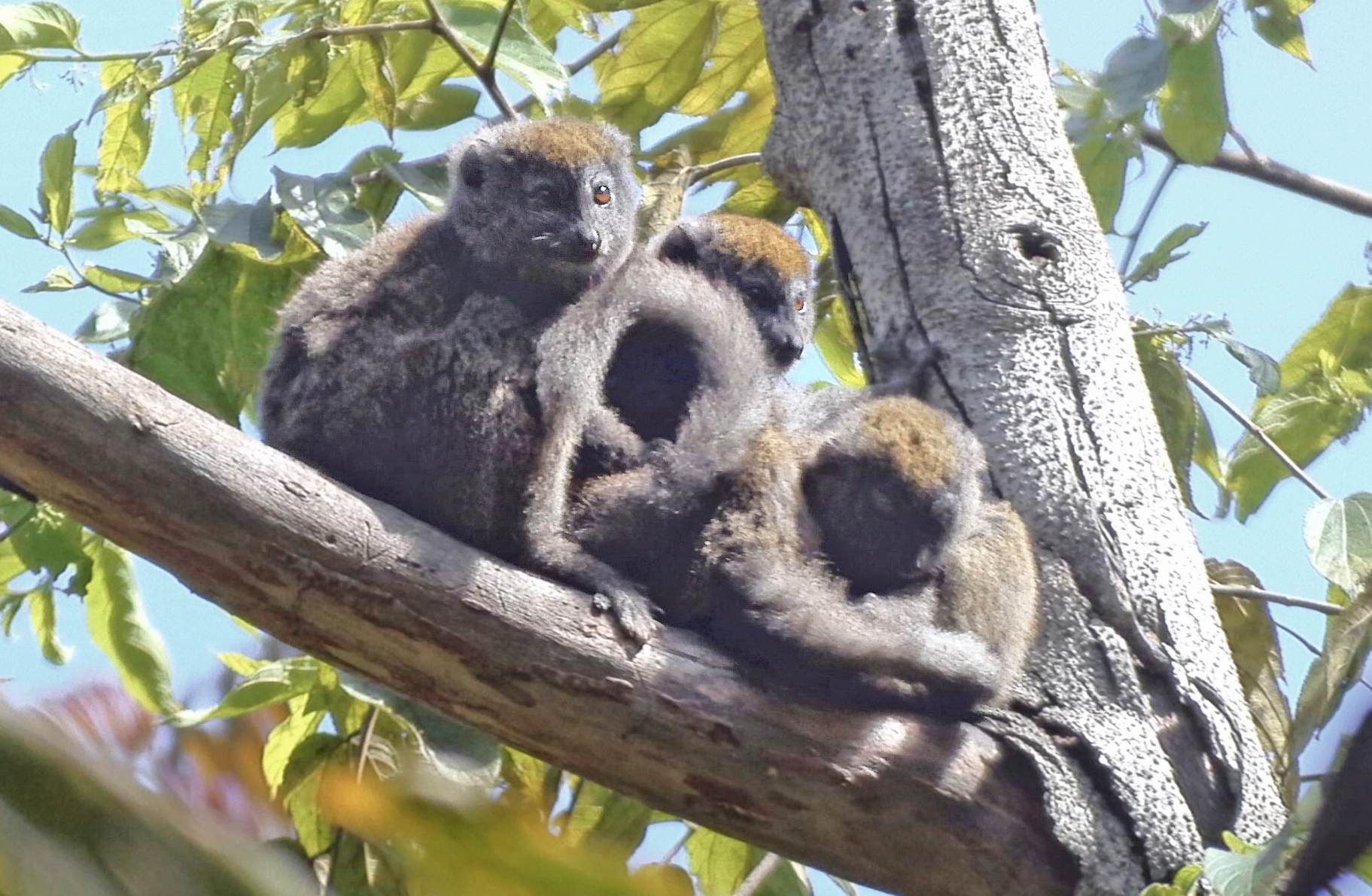
These lemurs also rely on olfactory cues to send and receive important information among troop members and with outsiders. They have glands on their forearms and near their armpits that they use for scent marking, performed on a substrate like papyrus plants. Before depositing their pungent secretions, individuals scratch the leaves of the papyrus plant with their teeth. They then either rub the leaves against their scent glands or urinate on the plant.
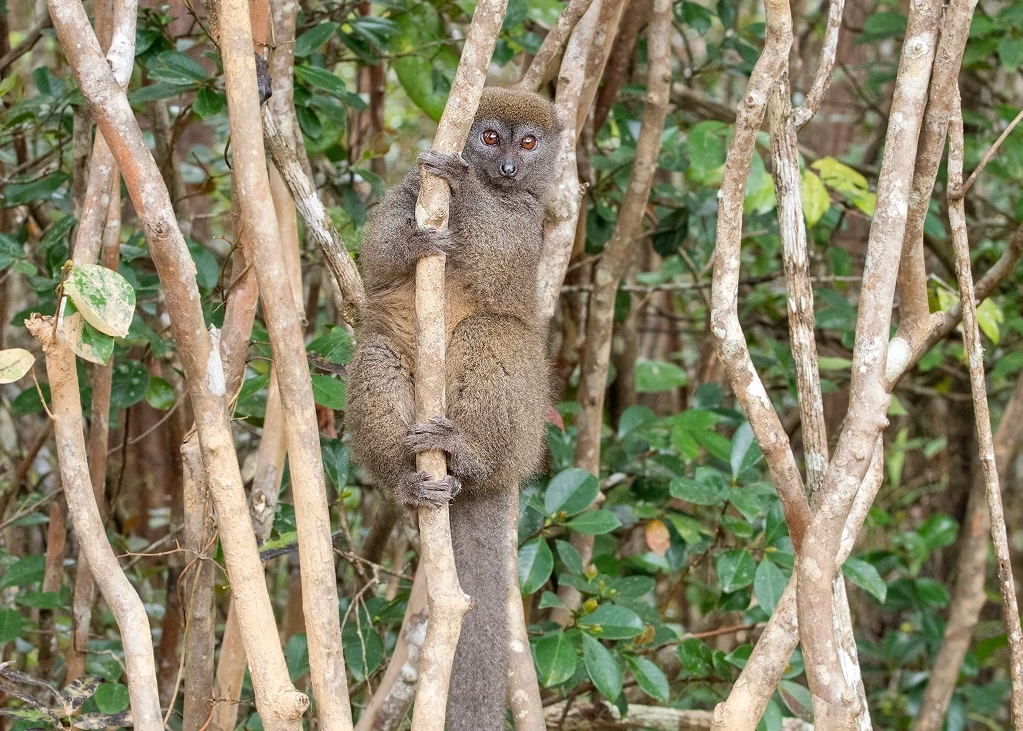
Reproduction and Life Cycle
This lemur species is mostly monogamous. Breeding occurs during the dry season (June and July) with births occurring during the rainy season (October through January) when bamboo is plentiful.
A newborn weighs a mere 1.6 oz (45.2 g) and is completely dependent on the mother, which carries the tiny one in her mouth for the first two weeks of her infant’s life. After two weeks of age, the infant is able to cling to her mother as she goes about her day. Mothers will carry their young in this way for about three months. If he feels like helping, an infant’s father might carry the youngster during this period. Male bamboo lemurs are reported to offer a bit more support than other lemur species. Parental care, however, largely remains the mother’s responsibility.
At three weeks of age, an infant is able to jump, hop, and walk. It begins eating bamboo by six weeks of age but remains dependent on the mother to forage for it. A mother “parks” her infant on a branch in the middle of a bamboo grove while she goes off to forage, leaving it in a safe location. The dense thicket provides camouflage protection from predators. The mother may return periodically to groom or nurse her infant. By 20 weeks of age, the youngster is completely weaned
Conservation and Threats
The eastern bamboo lemur is listed as Vulnerable by the International Union for Conservation of Nature. Though its conservation status is not as critical as other lemur species, the population is decreasing. Eastern bamboo lemurs are one of the most hunted of all lemurs, and they are also captured for the pet trade. Major human disturbances, such as deforeestation, also negatively impact the species. However, in somewhat of a paradox, certain species of bamboo plants thrive as secondary growth, which gives the eastern bamboo lemurs the potential to thrive there as well, as long as the bamboo thickets are not removed.
